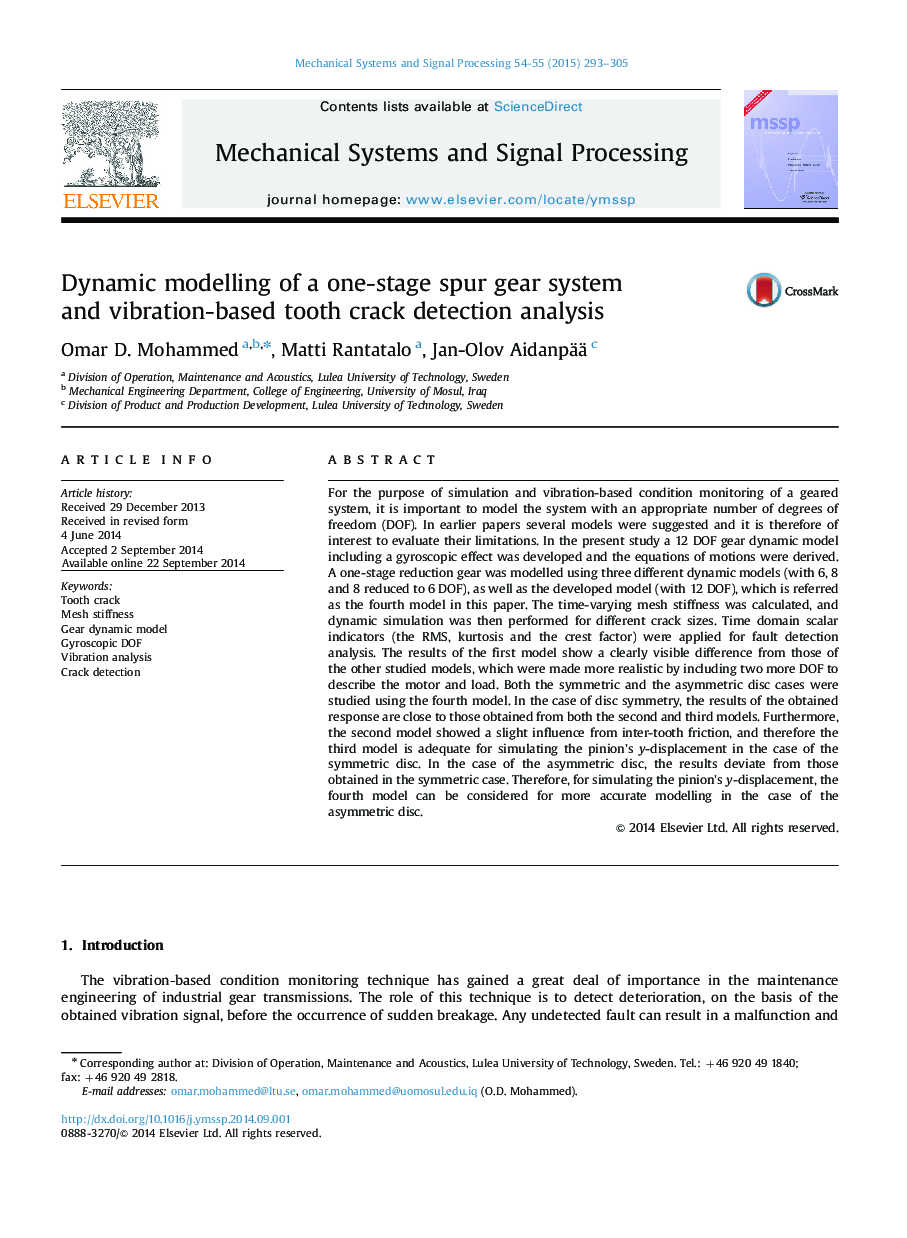| کد مقاله | کد نشریه | سال انتشار | مقاله انگلیسی | نسخه تمام متن |
|---|---|---|---|---|
| 559341 | 1451867 | 2015 | 13 صفحه PDF | دانلود رایگان |
• Time varying gear mesh stiffness is investigated for cracked tooth gear.
• A new 12 DOF beside three other models are applied to simulate the same gear system.
• Dynamic simulation is performed to study the obtained dynamic response for all crack cases.
• Third model (8 reduced to 6 DOF) is adequate for modelling the symmetric disc case.
• The developed model is the more accurate for modelling the asymmetric disc case.
For the purpose of simulation and vibration-based condition monitoring of a geared system, it is important to model the system with an appropriate number of degrees of freedom (DOF). In earlier papers several models were suggested and it is therefore of interest to evaluate their limitations. In the present study a 12 DOF gear dynamic model including a gyroscopic effect was developed and the equations of motions were derived. A one-stage reduction gear was modelled using three different dynamic models (with 6, 8 and 8 reduced to 6 DOF), as well as the developed model (with 12 DOF), which is referred as the fourth model in this paper. The time-varying mesh stiffness was calculated, and dynamic simulation was then performed for different crack sizes. Time domain scalar indicators (the RMS, kurtosis and the crest factor) were applied for fault detection analysis. The results of the first model show a clearly visible difference from those of the other studied models, which were made more realistic by including two more DOF to describe the motor and load. Both the symmetric and the asymmetric disc cases were studied using the fourth model. In the case of disc symmetry, the results of the obtained response are close to those obtained from both the second and third models. Furthermore, the second model showed a slight influence from inter-tooth friction, and therefore the third model is adequate for simulating the pinion׳s y-displacement in the case of the symmetric disc. In the case of the asymmetric disc, the results deviate from those obtained in the symmetric case. Therefore, for simulating the pinion׳s y-displacement, the fourth model can be considered for more accurate modelling in the case of the asymmetric disc.
Journal: Mechanical Systems and Signal Processing - Volumes 54–55, March 2015, Pages 293–305
